9.4 /10 1 Votes
4.8/5 CoolROM Genre(s) 2D versus fighting | 4.5/5 Emuparadise Composer(s) Satoshi Ise Cabinet Upright Initial release date 2000 | |||||||||||||||||||||||||||||||||
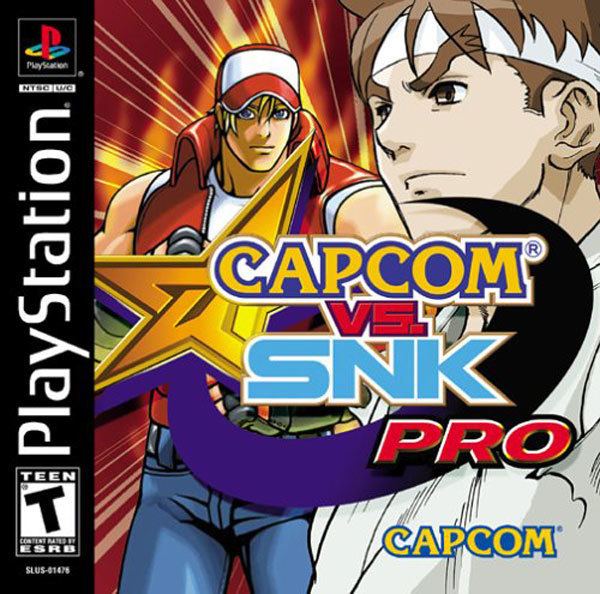 | ||||||||||||||||||||||||||||||||||
Release date(s) ArcadeJP: 2000NA: 2000(Pro)JP: 2000NA: 2000DreamcastJP: September 6, 2000NA: November 9, 2000EU: December 15, 2000(Pro)JP: June 14, 2001PlayStation (Pro)JP: April 18, 2002EU: July 12, 2002NA: August 14, 2002 Mode(s) Up to 2 players simultaneously Developers Capcom, Capcom Production Studio 1 Similar SNK vs Capcom games, Fighting games | ||||||||||||||||||||||||||||||||||
Capcom vs snk millennium fight 2000 intro
Capcom vs. SNK: Millennium Fight 2000 (カプコン バーサス エス・エヌ・ケイ ミレニアムファイト 2000, Kapukon Bāsasu Es-Enu-Kei Mireniamu Faito Nisen), also known as simply Capcom vs. SNK in international releases, is a 2000 head-to-head fighting game produced by Capcom originally released as a coin-operated arcade game for Sega's NAOMI hardware and later ported to the Dreamcast. It is the second game in the SNK vs. Capcom series and the first game in the series to be released for the arcades.
Contents
- Capcom vs snk millennium fight 2000 intro
- Gameplay
- Plot
- Characters
- Versions
- Audio track
- Reception
- References
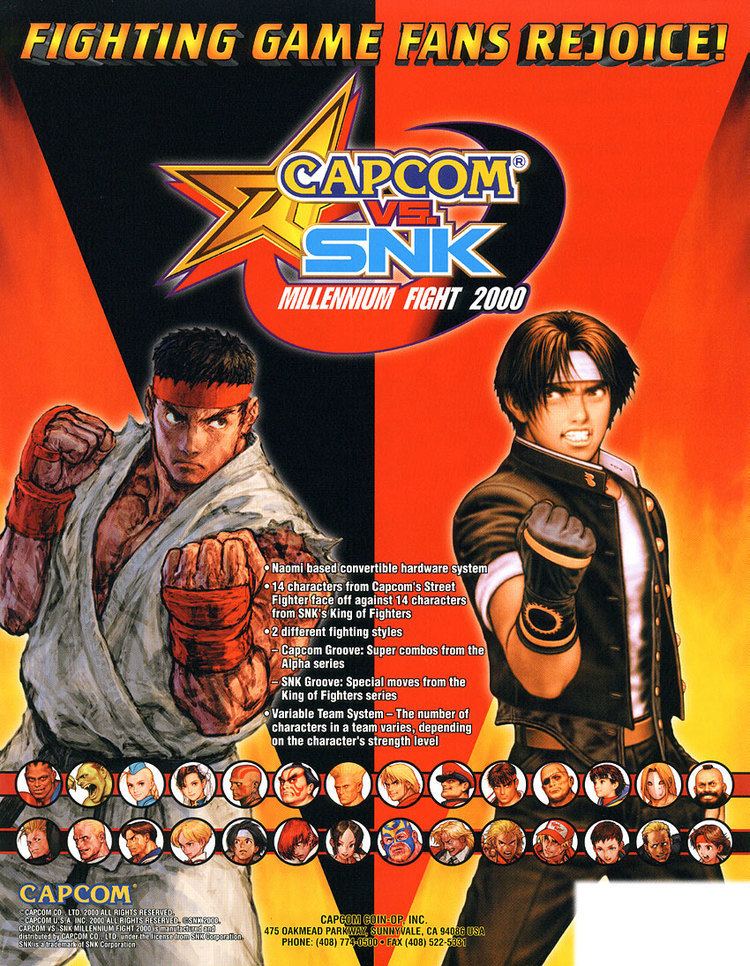
The sequel Capcom vs. SNK 2 featuring tweaked gameplay and more characters was released the following year.
Gameplay
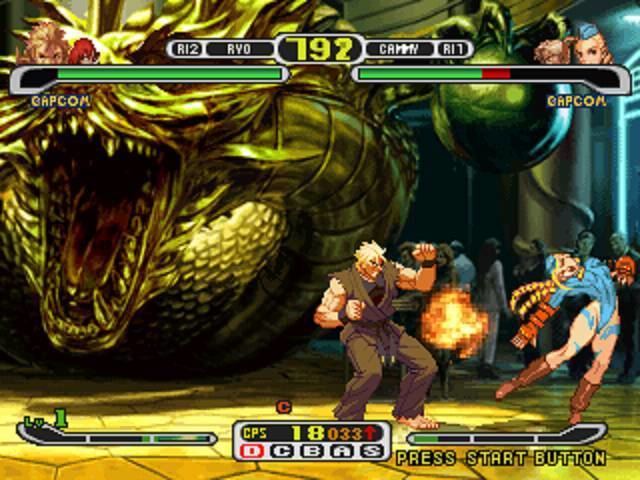
Capcom vs. SNK utilizes a "ratio" system, in that the "ratio" is a rating of a character's overall strength, ranging from 1 to 4. Teams of up to four can be assembled, but their combined ratios must equal and go no higher than 4. The gameplay uses the SNK-style four-button format. The player also has their choice of "groove", or attack meter. The SNK-Groove is based on Extra mode from The King of Fighters '94 to '98, whereas the Capcom-Groove is based on the gameplay system from Street Fighter Alpha.
Plot
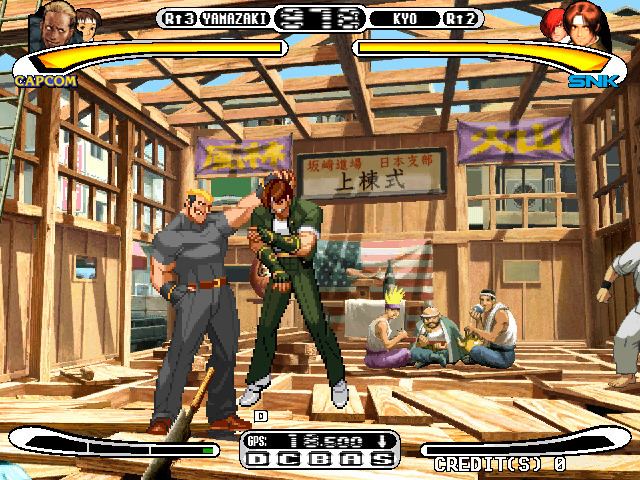
In 2000, a special martial arts event is planned through a collaboration of the two most powerful world organizations: Garcia Financial Clique and Masters Foundation. The gala event – it is hoped by everyone – will ease the political conflicts between the two powers. The competition was named "Millennium Fight 2000".
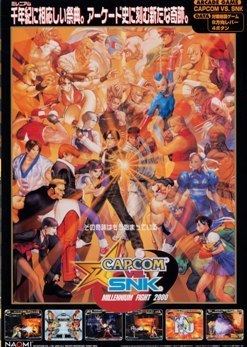
Many renowned martial artists have registered for the tournament. People around the world focus intensely on the upcoming exhibitions, making long-awaited opening ceremony a huge success.
Characters
Ratio 1
Ratio 2
Ratio 3
Ratio 4
*Hidden
**Added in Capcom vs. SNK Pro
Versions
An updated version of the original Capcom vs. SNK titled Capcom vs. SNK Pro was released on the Arcade Sega NAOMI GD-ROM hardware (2000), Dreamcast (2001) and PlayStation (2002), the latter suffering from slight load times between rounds and downgraded graphics and sound due to hardware limitations. New additions included Joe Higashi (from Fatal Fury) and Dan Hibiki (from Street Fighter Alpha), new moves for existing characters, and new modes of play.
Audio track
In the options menu, in the middle of a song a voice can be heard saying in Portuguese: "Kaiser, uma grande cerveja. A cerveja dos momentos felizes". This translates as "Kaiser, a great beer. The beer of the happy moments." Kaiser is a beer manufacturer in Brazil and this audio track was a rip from commercial insertion on Jovem Pan FM radio. The rip was claimed by RadioDJ.com.br and released on Napster in late 1999. All three versions of the game (arcade, Dreamcast and PlayStation) feature this audio track. This commercial insertion also was found in another song from DJMax Portable 3, NieN - Leave Me Alone.
There are a few audio edits in the North American version of the game:
Stage Final Fight
The Arcade version completely omits the theme "Needle" (from the Final Fight stage) and replaces it with the theme B.B. (from the SNK stage).
The North American console ports retain the track. However, the lyrics were completely omitted. The most reasonable explanation for this is because of one line in the lyrics that state "I'm ready to fuckin' spill". The Japanese version retain the unedited track.
Character Selection Screen
All American versions of the game, along with all the Pro editions, omit the game's announcer saying the character's name during the character select screen. this may be because the Japanese version of the game features the announcer referring to Balrog by his full Japanese name: Mike Bison, as well as the lack of an announcer voice for Akuma's name outside Japan.
Sagat
Sagat makes a generic grunt after saying "Tiger" when performing the Tiger Genocide.
Rugal Bernstein
Rugal makes a generic grunt when performing the Genocide Cutter. He only says "Cutter" in the overseas PlayStation releases.
Reception
The Dreamcast version received "favorable" reviews, while the PlayStation version's Pro edition received "average" reviews, according to the review aggregation website Metacritic. In Japan, Famitsu gave the former console version and its Pro edition each a score of 30 out of 40.
